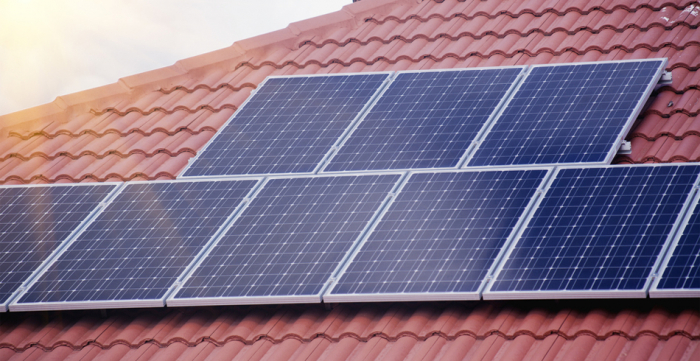Australia, one of the world-leaders in household rooftop solar panel uptake, has once again broken its own record for the number of solar panels installed in a year. In 2020, installations were up nearly 30 percent from the year before, according to an analysis from Australia's national science agency, CSIRO.
The data, compiled by energy efficiency experts and reported in a CSIRO statement, come from Australia's Clean Energy Regulator, a national body tasked with reducing the country's carbon emissions and accelerating its use of clean energy.
It shows that while their federal government leaders are lagging behind on climate action, everyday Australians are doubling down on renewable energy, installing more rooftop solar panels than ever before and beefing up the size of their rooftop arrays.
"Sustained low technology costs, increased work from home arrangements and a shift in household spending to home improvements during COVID-19played a key role in the increase of rooftop solar PV systems under the SRES," said Clean Energy Regulator senior executive Mark Williamson, referring to a national scheme in Australia that allows homeowners and small businesses to recoup some of the costs of putting the panels on their roofs.
The record-breaking year is really just another one for the books for the sun-soaked country, which has seen installations rise year on year as the cost of renewables has fallen. In 2018, rooftop solar installations jumped almost 60 percent from 2017.
"Australia is one of the sunniest places on the planet," said Michael Ambrose, a senior experimental scientist at CSIRO who led the CSIRO analysis, which mirrors a separate annual assessment of the Australian rooftop solar marketfrom consultancy firm SunWiz.
"We lead the world in PV capacity on a per capita basis at 591 watts per person which is almost eight times the worldwide average," he said.
Photovoltaics, or PV, is what scientists often call solar panels, which are made of solar cells stacked together to capture the Sun's energy and turn it into electricity. Capacity is the amount of electricity a solar system can produce at its peak.
"The [latest] solar PV installation data shows how quickly PV systems have been taken up across Australia and the increasing size of the PV arrays," Ambrose said.
Data used in the CSIRO analysis from Australia's federal Clean Energy Regulator showed that in 2020, a record-high 362,000 solar panels were installed and certified under the scheme for small-scale renewables.
At the year's end, Australia had a total of over 2.68 million rooftop solar systems on homes – which means one in four households are now soaking up sunlight and converting it to electricity.
And the country's rooftop solar capacity is only expected to grow, with installations already trending higher in 2021 based on early data.
But amidst the fanfare, there are bigger questions that need tackling: can Australia's aging electricity network cope with the huge influx of solar energy – it's old and really needs to be upgraded – and could solar panels coupled with household batteries in fact keep the grid stable and bolster electricity supplies in the event of extreme weather, such as lightning strikes.
"How these systems behave when sitting on our rooftops can have material impacts on the broader electricity grid," renewable energy researcher Naomi Stringer from UNSW told Renew Economy.
"Impacts of rooftop solar can be particularly acute during disturbance events when the grid is already strained, posing new risks to power system security," she said.
"However, there are also important opportunities to harness rooftop solar capabilities to help restore power system security."
That potential is seen by many small Australian communities who faced power outages as they fought fire fronts during the country's devastating 'Black Summer' bushfires and who are taking matters in to their own hands – going off-grid, installing their own standalone solar-powered systems.
When we take a step back though, some researchers say that Australia is playing catch-up to other renewable leaders such as Germany.
Australia might be building new renewable energy infrastructure, including large solar arrays and wind farms, at a per capita rate ten times faster than the global average, in recent years. But it still trails behind other countries in the total amount of energy it generates from renewables.
"Denmark is generating about two-thirds of its electricity from renewables – non-hydro renewables – and it has a population a fifth of Australia, so their per capita annual generation is many times that of Australia, and similarly for Scotland," renewable energy expert Mark Diesendorf from UNSW Sydney told the Australian Associated Press in early 2021.
All the while, solar cell scientists have been testing new-fangled configurations with materials other than silicon that can capture more parts of the light spectrum and could be used to build more efficient solar cells – and they're smashing record after record, too.
Nothing like a bit of healthy competition.
More about: #Australia
















































